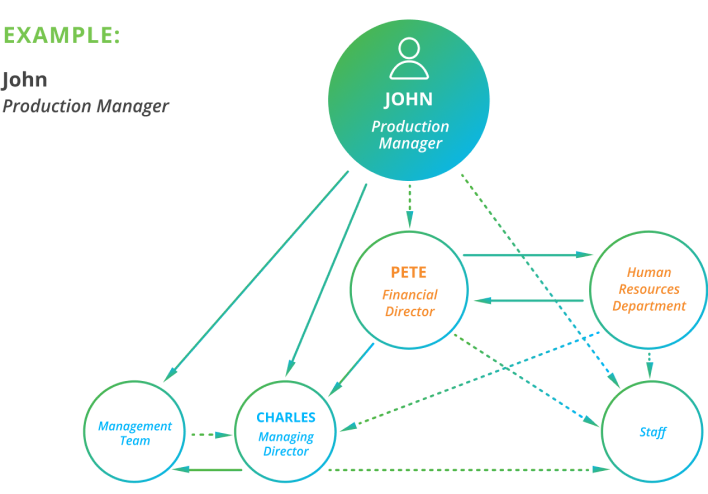Influence Without Authority
Influence Mapping
An influence map is a visual representation of who has influence in your work, regardless of whether they have formal authority. It also shows who you may need to influence for whom you don’t have formal authority. The purpose is to discover which individuals you may need to use the step of the Influence Model with to get feedback and buy-in from, and who may be asking the same of you.
Map Elements
There are three main considerations when constructing your influence map:
- Individual importance (how much does this specific person matter?)
- Relationships (what relationships exist?)
- Influential weight (to what extent does the individual have control over others?)
On the map, importance is represented by the size of the person’s circle. Relationships are represented by arrows, and influence is represented by the thickness of the line between people.

Creating Your Influence Map
Select a work project for which you’d like to create an influence map. Work through the following 7 steps, and be prepared to review and discuss with your coach.
1. Prepare a stakeholder analysis
List out all the people who directly or indirectly have an interest of impact on your project.
2. Analyze your stakeholders
For each stakeholder listed, identify the following:
- What do they have influence over, and who has influence over them?
- How strong is the influence?
- What is your relationship with each individual? Is it strong, strained, or are they a stranger?
- What amount of formal authority do they have over you, or vice versa?
3. Map the importance
Sketch out your influence map, using large circles for the most important stakeholders, and smaller circles for those with less influence.
4. Map the direction
Indicate the direction of influence on the map using arrows between individuals. These can be unidirectional or bi-directional.
5. Map the strength
Indicate the strength by using thick line and thin lines to differentiate strong and weak influence.
6. Review your map
Take time to reflect on your map. Which stakeholders have the most influence? Whom do you have the most, or the least, amount of influence over? Understanding your relationships will help you recognize where, and how, to implement the influence model or reciprocal support.
7. Repeat!
Relationships and work projects are constantly changing, which means your stakeholder map is too! Make changes to your map on a regular basis so that you always have an accurate depiction of the dynamics for those you work with.

Conclusion
Understanding how to influence those for whom you don’t have formal authority takes practice. It also takes recognizing who those individuals are, and what appeals to them. Using the Influence Model and Influence Mapping will help you gain a clearer picture of your relationships at work, and help you enact the law of reciprocity, such that your relationships with others are mutually beneficial.
